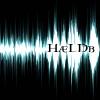Alittle info on sample rate and recording
Alittle info on sample rate and recording
since sampling is used in the digital world and not the analog world I just want to show you how most of this works. as we know in digital world, audio is sent into an interface of some kind and transferred to your computer into 1 and 0's (binary).With that being said you must understand that sample rate is very important when contemplating the quality of your audio when exporting. A sample is merely s "snapshot" within the audio wave that is recorded. Its like the computer takes a small picture of that many times until the wave is completely capture in snapshots.
So a song in 44.1 kHz is taking 44,100 snapshots in 1 second. where 44,100 is usually the most common today. In the highest areas of recording studios most record going in will be at 96k-192k but you may not see that that often. I have seen some actually go all the way up to 2,822,400 but you will most likely never see this. The reason they do this is because of the sampling Nyquist therom. Where we can successfully sample and play back frequency components up to one-half the sampling frequency. Because when you record at 96k and sample down to 44.1k you will see that the 44.1k wont take as many snapshots as the 96k will, but the 44,1k snaps shots will be wider then the 96k but will be accurate because of how accurate 96k captured the whole wave. If this theory is not into place correctly you will introduce alias sounds into your recording. Which are digital signals trying to fill in the gaps of where those snapshots cant reach. It makes pops, glitches, bleeps, bloops and all sort of noises. Which is why having a interface to record your audio 44.1 or above is very handy.
Also Sampling would simply be the horizontal lines of a wave in digital form. The vertical way of a wave would be quantization and no not the line up measure you use in midi.
Quantization represents the amplitude component of the digital sampling process. It merely translates the voltage levels of a continuous analog signal into binary digit bits. The higher the bit rate the more accurate it will be in the ways of the sound waves that has been sampled. 16 bit would be the most common. 44.1k/16 is usually what we use in cds and pretty much anything. Dvds were about 48k/24bit and I have seen blue rays 96k/24 bit. anything above 24 is very rarely used in audio and it will give it a lot of head room. But if you use anything below 24 bit.
Most audio software programs you have will have a "dither" option when you export. dither would be the extra digital snapshots that are added to your wave to make it slightly more accurate. acoustic waves are very sporadic and dynamic and samples of digital audio of that wave are very blocky. when you try to fill up a circle (with noise) with a bunch of rectangles you will have empty spaced at the end of the rectangles that cants fill up the circle. Well that's what dither does and there is usually it goes in forms like rectangle,triangle and you might see other ones like POw-r1 and 2 and so on. All these are are different algorithms created to make sure your wave is as digitally accurate as possible. but most of you wont have to use this because I know very few if none will master a track on this website. but if you want to be extra safe then sorry. Then your file is your play ground and have fun.


wow thanks for this! thanks to you i learned a little bit about sound.
oh... now i understand that, thank you brandon
WTF? You saying 24bit is unusual??? Dither is nice I agree, but its usual...